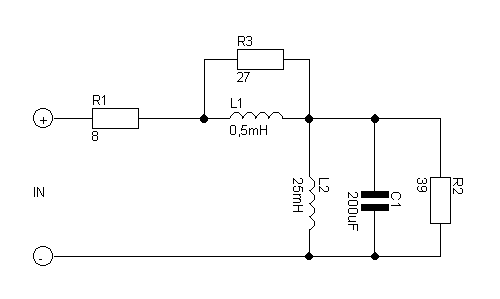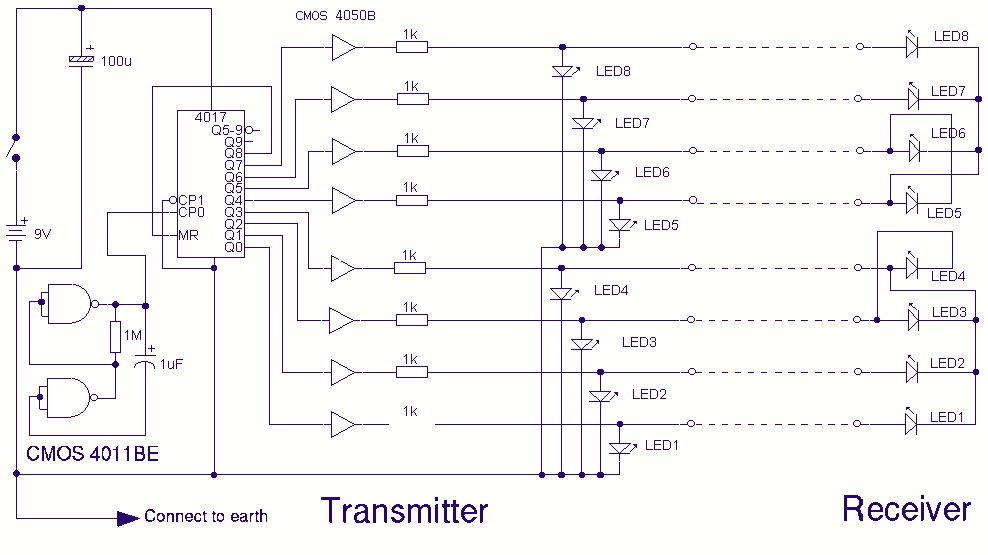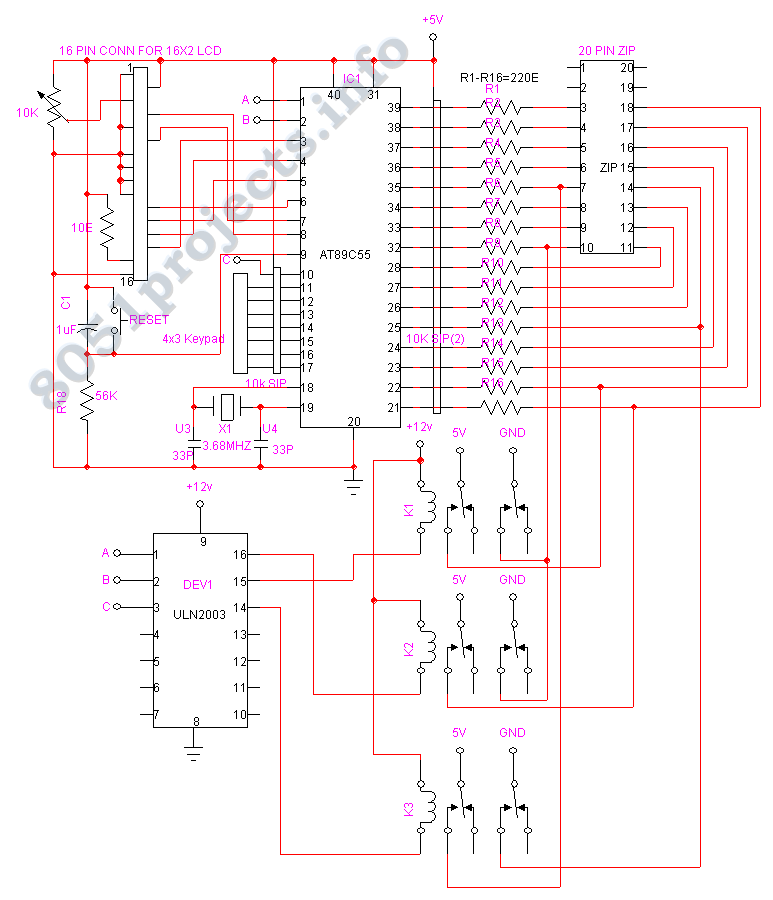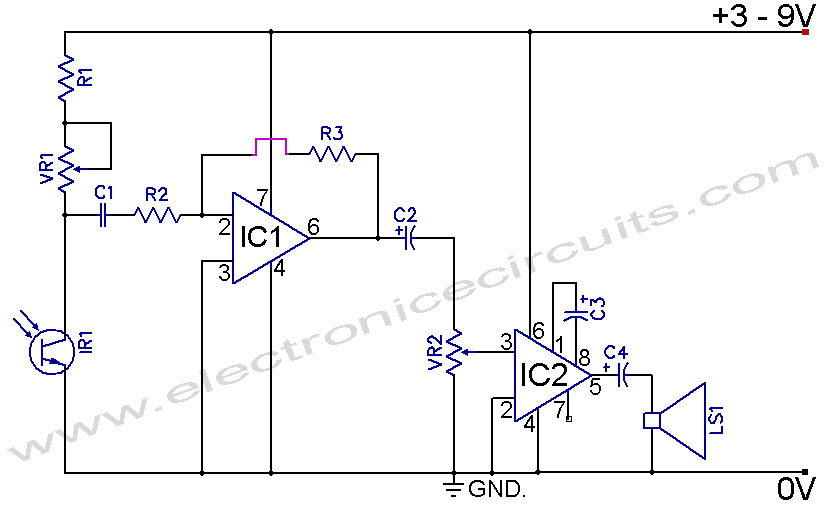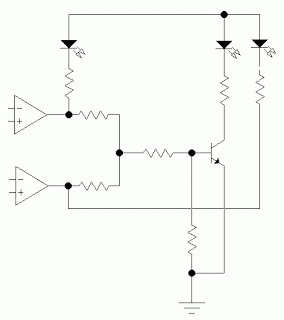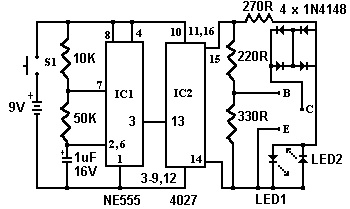
Continuity Tester II
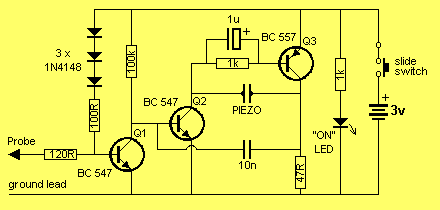
Our CONTINUITY TESTER gives an audible indication of continuity between the probes so you can keep your eyes on the probe tip. Secondly its response-time is very short so that you can make lots of tests very quickly while listening for the beep. And thirdly it only responds to a definite short circuit or one that has a resistance of 50 ohms or less. It will not respond to values above 80 ohms or the voltage drop across a diode. More: As we mentioned, the circuit detects resistance values of 50 ohms or less between the probes and allows an oscillator to turn ON and produce a tone from the piezo diaphragm. A LED is also included on the board to indicate when the unit is ON as the circuit.
The continuity tester circuit operates by measuring the resistance between two probes. When the resistance is 50 ohms or less, the circuit activates an audio oscillator, which generates a tone through a piezoelectric diaphragm, providing an audible signal to the user. The design incorporates a transistor-based oscillator that is triggered by the detection of low resistance.
The main components of the circuit include the probes, a resistor for setting the threshold resistance, a transistor to amplify the oscillator signal, a piezo diaphragm for sound output, and an LED to indicate power status. The probes are connected to the input terminals of the circuit, allowing for direct measurement of the resistance present between them.
The circuit is designed to ignore resistances above 80 ohms, ensuring that only significant continuity is indicated. This is achieved through careful selection of the resistor values and the transistor characteristics, which are set to provide a threshold response that meets the specified requirements.
The LED indicator is powered simultaneously with the oscillator circuit, providing a visual cue that the tester is active. This feature is particularly useful in environments where audible signals may not be easily heard. The compact design of the circuit allows for easy integration into handheld devices, making it suitable for field testing applications.
Overall, the continuity tester is an essential tool for electronics troubleshooting, providing quick and reliable continuity checks with both audible and visual indicators.Our CONTINUITY TESTER gives an audible indication of continuity between the probes so you can keep your eyes on the probe tip. Secondly its response-time is very short so that you can make lots of tests very quickly while listening for the beep.
And thirdly it only responds to a definite short circuit or one that has a resistance of 50 ohms or less. It will not respond to values above 80 ohms or the voltage drop across a diode. As we mentioned, the circuit detects resistance values of 50 ohms or less between the probes and allows an oscillator to turn ON and produce a tone from the piezo diaphragm. A LED is also included on the board to indicate when the unit is ON as the circu 🔗 External reference
The continuity tester circuit operates by measuring the resistance between two probes. When the resistance is 50 ohms or less, the circuit activates an audio oscillator, which generates a tone through a piezoelectric diaphragm, providing an audible signal to the user. The design incorporates a transistor-based oscillator that is triggered by the detection of low resistance.
The main components of the circuit include the probes, a resistor for setting the threshold resistance, a transistor to amplify the oscillator signal, a piezo diaphragm for sound output, and an LED to indicate power status. The probes are connected to the input terminals of the circuit, allowing for direct measurement of the resistance present between them.
The circuit is designed to ignore resistances above 80 ohms, ensuring that only significant continuity is indicated. This is achieved through careful selection of the resistor values and the transistor characteristics, which are set to provide a threshold response that meets the specified requirements.
The LED indicator is powered simultaneously with the oscillator circuit, providing a visual cue that the tester is active. This feature is particularly useful in environments where audible signals may not be easily heard. The compact design of the circuit allows for easy integration into handheld devices, making it suitable for field testing applications.
Overall, the continuity tester is an essential tool for electronics troubleshooting, providing quick and reliable continuity checks with both audible and visual indicators.Our CONTINUITY TESTER gives an audible indication of continuity between the probes so you can keep your eyes on the probe tip. Secondly its response-time is very short so that you can make lots of tests very quickly while listening for the beep.
And thirdly it only responds to a definite short circuit or one that has a resistance of 50 ohms or less. It will not respond to values above 80 ohms or the voltage drop across a diode. As we mentioned, the circuit detects resistance values of 50 ohms or less between the probes and allows an oscillator to turn ON and produce a tone from the piezo diaphragm. A LED is also included on the board to indicate when the unit is ON as the circu 🔗 External reference
